21 Feb 2010
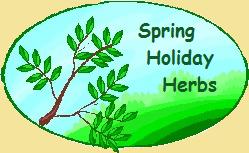
Just as the Winter holidays exemplified LIGHT, the Spring season is about LIFE and each of the holidays takes its own spin on our need to acknowledge and prepare for a season where we must tend to life sustaining occurances. Both religious and mundane traditions mirror this, making our attention to such things a truly wholistic experience--good for us emotionally, spiritually and physically.
To experience Life well, it requires good health-from conception to old age. Our holidays have built in celebrations to encourage this. The spring holidays, in particular, have a celebratory arc that includes: letting go, sustenance and growth. Whatever your tradition, the season implores these three aspects to be recognized and acted upon, in a variety of ways including wild reverie, fasting, overeating......all helping us to make sense out of this chaotic transitional period. Looking at how certain plants/foods are embedded into our holidays shows us how the natural cycle, if paid attention to, can nurture us.
 Beginning with February 2nd, we have the dual holidays of Imbolc or Candlemas (as it is celebrated in Europe) and Groundhog's Day---both speak to Spring's arrival, in mundane and mystical ways. It is still winter, but the light and some signs of warmth signal the start of a new season. In England, Candlemas is the first day of the new farming year. The foods associated with this holiday are milk, eggs --both hearty, filling foods, but both also primary signs of birth. Beginning with February 2nd, we have the dual holidays of Imbolc or Candlemas (as it is celebrated in Europe) and Groundhog's Day---both speak to Spring's arrival, in mundane and mystical ways. It is still winter, but the light and some signs of warmth signal the start of a new season. In England, Candlemas is the first day of the new farming year. The foods associated with this holiday are milk, eggs --both hearty, filling foods, but both also primary signs of birth.
This is a good time to start some seeds of herbs such as parsley, lavender, thyme and sage. These all take a long time to germinate and need extra attention--which is available now, but perhaps not as Spring gets busier.
VALENTINE'S DAY ~ February 14 ~ Everyone loves this holiday--if for no other reason than it brings the bright colors of red/pink/purple to a snowy white backdrop. We also think of chocolate--a fine herbal product. Originally,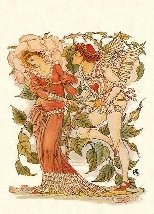 however, chocolate was spiked with a bit of cayenne and a little salt. All three of these have an effect on our blood--getting things going, putting a bit of spark things and keeping the vascular system working well--all in moderation! So this time of love is really a reminder to take care of our own hearts--as well as those we care about. The colors and the foods-- refer to the health of our blood--our life force....that which compels us to reproduce....leading to BIRTH! Try making some chocolates with some cayenne powder and add a few grains od Celtic salt to the tops before they set. Rose hip, hawthorn and hibiscus teas--all a beautiful red and full of Vit. C for vascular health, are good choices to sip all month. however, chocolate was spiked with a bit of cayenne and a little salt. All three of these have an effect on our blood--getting things going, putting a bit of spark things and keeping the vascular system working well--all in moderation! So this time of love is really a reminder to take care of our own hearts--as well as those we care about. The colors and the foods-- refer to the health of our blood--our life force....that which compels us to reproduce....leading to BIRTH! Try making some chocolates with some cayenne powder and add a few grains od Celtic salt to the tops before they set. Rose hip, hawthorn and hibiscus teas--all a beautiful red and full of Vit. C for vascular health, are good choices to sip all month.
LUPERCALIA ~ February 15 ~ Celebrated in ancient Rome, this was a fertility rite marked by wild merriment, whippings,sacrifice and consuming/bathing in milk. Marks of sacrificial blood were rubbed on the foreheads (precursor to Ash Wednesday tradition?)
MARDI GRAS ~ February 16 (or closest Tuesday date) ~  This is also called "Fat Tuesday" or "carne vale"- farewell to meat---where lots of fatty foods are feasted upon to get them out of the house for the year--pancakes and all greasy foods are the traditional meal. Wildness, eating--boy that sounds familiar! The point however, is a recognition of the end of the need for fatty foods to get us through a long, cold winter of rest and to change over to a diet that invites more vigor--lighter fare. Beans and seeds are also eaten--both suggesting the potential for growth/life. Throw lots of sage, fennel, thyme into your dishes to help digest the fats and get the blood stirring. This is also called "Fat Tuesday" or "carne vale"- farewell to meat---where lots of fatty foods are feasted upon to get them out of the house for the year--pancakes and all greasy foods are the traditional meal. Wildness, eating--boy that sounds familiar! The point however, is a recognition of the end of the need for fatty foods to get us through a long, cold winter of rest and to change over to a diet that invites more vigor--lighter fare. Beans and seeds are also eaten--both suggesting the potential for growth/life. Throw lots of sage, fennel, thyme into your dishes to help digest the fats and get the blood stirring.
* These last three holidays all fall within days of each other--indicating a very deeply ingrained understanding of the need for fats to aid in fertility.
LENT ~ Occuring immediately following Fat Tuesday, we turn our attention to being more reserved, getting ready for hard work of farming. We are asked to give up something we like and though it does not have to be a food, it is a good time to start a diet, or simply let go of your most destructive junk food habit. Spring is when your body is better able to speed its metabolism and benefits most from light fasts. Here is where good liver "Spring" tonics are helpful---Sassafras, dandelion, nettles, chicory...any bitter plants you like. Having said that, one of the most beloved foods associated with Lent is the Hot Cross Bun! Hardly a health food, but eating one.....or two is worth it for the pure symbolism. These are yeasted buns with dried fruit, topped with strips of icing in the shape of a Celtic cross (as opposed to the Christian cross)-meaning the cross demarcates 4 equal spaces, which is a metaphor for the seasons. 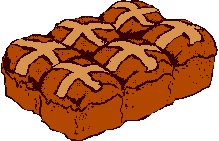 Yeast, fruit, a sign of the turning of the wheel of the year--not to mention....icing--this is a nod to fertility at its tastiest! Yeast, fruit, a sign of the turning of the wheel of the year--not to mention....icing--this is a nod to fertility at its tastiest!
PURIM ~ A moveable Jewish feast which is always on the full moon. While the story is taken form the Book of Esther in the Torah and is celebrated as a holiday of liberation or escape from enemies of the Jewish people (much as Chanukah is seen), it is a holiday full of signs of fertility and merriment with remnants of Halloween, Mardi Gras, Bacchanalia al thrown together. Purim carnivals, dressing in costume, reading the Megillah (the Book of Esther) excessive drinking/eating and noise making with "groggers". Purim means the "Festival of Lots"--a lottery that may have chosen a date to wipe out all Jews in Persia by Haman, the wicked right hand man to the king. Because of the courage of the king's wife, the Jewish Esther, (more about her later), the whole scheme was averted. But the foods.....peas and beans (usually chickpeas) and lots of wine are the norm, but it is the dessert that makes Purim stand out. A cookie shaped like Haman's three cornered hat, called a Hamantaschen, is the star of the holiday. Traditionally, it is filled with a poppyseed paste or apricots. Sounds straight forward enough--but it is Esther who is the heroine and she did use some feminine whiles on the king to make him disregard Haman's plans. Herbalists and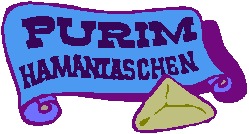 historians are aware that the triangle is usually a feminine shape--impling the vulva--and a three sided cookie filled with poppy seed paste? This is clearly a fertility food. Other than poison ivy and sumac, herbs with three leaves or leaflets (red clover, raspberry, strawberry, trillium, etc) are all tonics for women's reproductive organs. So it is prescribed that Jews refrain from food--the "Fast of Esther" in her honor the day prior to Purim..... And.....as I said, this is a story out of Persia, the home of the fertility goddess Oestara (pronounced "estarra)...from which we get the word...EASTER. historians are aware that the triangle is usually a feminine shape--impling the vulva--and a three sided cookie filled with poppy seed paste? This is clearly a fertility food. Other than poison ivy and sumac, herbs with three leaves or leaflets (red clover, raspberry, strawberry, trillium, etc) are all tonics for women's reproductive organs. So it is prescribed that Jews refrain from food--the "Fast of Esther" in her honor the day prior to Purim..... And.....as I said, this is a story out of Persia, the home of the fertility goddess Oestara (pronounced "estarra)...from which we get the word...EASTER.
ST. PATRICK'S DAY ~ Other than beer, we need to keep in mind GREEN--the color of spring and the Clover--the THREE leafed type, which connotes female fertility. Clovers are mild blood thinners and in virtually all cancer and cleansing formulas (should be avoided by those on blood thinning medicines). Have a cup of red clover tea. Four leaf clovers ar a symbol of stability/four seasons. One of the tastiest and first spring greens to emerge is wood sorrell an oxalis.... a relative of all clovers. It make a great raw addition to a salad.
PASSOVER ~ As are several Jewish holidays, this is celebrated at the Full moon and so changes dates every year. The story of the Jews Exodus from slavery in Egypt, this holiday is emblematic of Spring from the message of renewal to 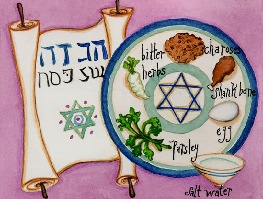 the foods and herbs eaten as part of a religious ritual meal, the Seder. The seder plate is the centerpiece of the meal and contains areas specific to certain foods. Bitter herbs (which can be horseradish, hyssop, etc) are meant ot signify the bitternes of slavery. Charoset is a mixture of wine/apples/nuts to signify the mortar used to build the pyramids. Parsley or Watercress is used to give thanks for the fruit of the earth and to remember our ancestors were farmers. It is then dipped into salt water-to give remebrance ot the tears of slavery and then eaten. The reading of the Haggadah states that we are to remember that Passover coincides with Spring. A shankbone of a lamb is a symbol of Temple sacrifice. Vegetarians now use a Beet instead of the bone--but both are symbols of blood--of LIFE. A roasted egg is displayed to remind us of another required offering to the Temple--again a sign of life. The seder plate is rounded out by the Matzoh-flat bread that is unleavened--probably in ancient times more like Pita bread than the cracker consistency we have come to know. It is a symbol of leaving in haste for freedom--without time to allow the bread to rise. Bread being the "staff of life" it was taken anyway--even in a less palatable form. Even before the meal begins, it is required that you go through your house and find ALL pieces and crumbs of leavened bread. For many, this means emptying out pockets to find the tiniest remnant of a months old snack and taking all the books off the shelves to let crumbs fall out to be swept away. This sounds a lot like a reason for Spring cleaning----and like ridding the home of certain foods to make way for a changes Spring diet-like fats at Mardi Gras. The seder meal itself is dependent on where you are from, but most include matzoh ball soup--which is a chicken base. Nothing risen can be eaten--even things that are "puffed" like rice cakes or crispies. Here, it seems like an indulgence in one food--an overload of grain--(that frankly makes a lot of people feel very constipated and lethargic as this holiday lasts a week), of suffering, before the renewal of freedom and partaking of the fresh greens, milk and honey in the Promised Land---a metaphor for seasonal transition. No better illustration of the dictum that" we are what we eat"--and also, that what we eat informs our spiritual and historical foundations. the foods and herbs eaten as part of a religious ritual meal, the Seder. The seder plate is the centerpiece of the meal and contains areas specific to certain foods. Bitter herbs (which can be horseradish, hyssop, etc) are meant ot signify the bitternes of slavery. Charoset is a mixture of wine/apples/nuts to signify the mortar used to build the pyramids. Parsley or Watercress is used to give thanks for the fruit of the earth and to remember our ancestors were farmers. It is then dipped into salt water-to give remebrance ot the tears of slavery and then eaten. The reading of the Haggadah states that we are to remember that Passover coincides with Spring. A shankbone of a lamb is a symbol of Temple sacrifice. Vegetarians now use a Beet instead of the bone--but both are symbols of blood--of LIFE. A roasted egg is displayed to remind us of another required offering to the Temple--again a sign of life. The seder plate is rounded out by the Matzoh-flat bread that is unleavened--probably in ancient times more like Pita bread than the cracker consistency we have come to know. It is a symbol of leaving in haste for freedom--without time to allow the bread to rise. Bread being the "staff of life" it was taken anyway--even in a less palatable form. Even before the meal begins, it is required that you go through your house and find ALL pieces and crumbs of leavened bread. For many, this means emptying out pockets to find the tiniest remnant of a months old snack and taking all the books off the shelves to let crumbs fall out to be swept away. This sounds a lot like a reason for Spring cleaning----and like ridding the home of certain foods to make way for a changes Spring diet-like fats at Mardi Gras. The seder meal itself is dependent on where you are from, but most include matzoh ball soup--which is a chicken base. Nothing risen can be eaten--even things that are "puffed" like rice cakes or crispies. Here, it seems like an indulgence in one food--an overload of grain--(that frankly makes a lot of people feel very constipated and lethargic as this holiday lasts a week), of suffering, before the renewal of freedom and partaking of the fresh greens, milk and honey in the Promised Land---a metaphor for seasonal transition. No better illustration of the dictum that" we are what we eat"--and also, that what we eat informs our spiritual and historical foundations.
EASTER ~ This holiday should always follow Passover as the Seder was the Last Supper--but because of the way the Hebrew and Christian calendars are configured, some years these two entwined events are out of sync. Though a Christian holiday, it is named after the Persian goddess Oestarra (and see references to queen esther, in the Purim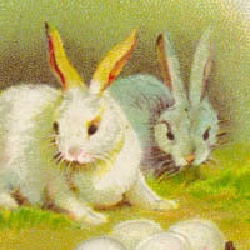 section). The rising of Jesus and the symbols of Easter--the eggs, rabbits-all signs of rebirth, fertility and abundance. A lot of Easter foods (lamb, meats, eggs) are the same as for Passover. Getting new dresses/hats is like spring cleaning--making things new and fresh. It is no coincidence, either that many of the natural dyes for eggs are made of onions, beets, yellow flowers like crocus--all harbingers of life and spring. section). The rising of Jesus and the symbols of Easter--the eggs, rabbits-all signs of rebirth, fertility and abundance. A lot of Easter foods (lamb, meats, eggs) are the same as for Passover. Getting new dresses/hats is like spring cleaning--making things new and fresh. It is no coincidence, either that many of the natural dyes for eggs are made of onions, beets, yellow flowers like crocus--all harbingers of life and spring.
BELTAINE ~ At the end of April, we come upon Beltaine, and ancient Celtic holiday that has survived to the present day in a much milder form as May Day. We are familiar with kids dancing the Maypole or leaving baskets of treats/flowers annonymously at people's doors, but have little understanding of the original pagan celebration. This was an annual Spring fertility right--where random couples were allowed to mate outdoors to bring about a fertile farming season. Couples were allowed a trial marriage period and any children produced during this time would belong to the mother only. The Maypole was danced by adults--the pole being a phallic symbol and young couples dancing around it and entwining it with flowers/ribbons as a visual symbol of fertility. Feasting, blessings, bonfires...all outside to allow for the experience of newly tilled earth and the smells of 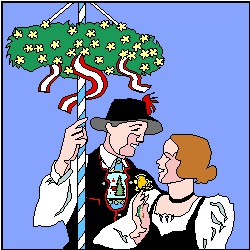 emerging herbs and greens. May baskets are a much tamer way of sharing bounty than random sexual encounters, but remembering the original intent may help you gather items to give--rather than junk food candy bars, think about a few seed packets, fresh flowers, cookies made with honey and seeds or nuts, a bundle of fresh herbs (thyme, mint, oregano, rosemary) and a few recipes so that the recipient could make a few dishes using the herbs... and a written blessing for health and renewal. emerging herbs and greens. May baskets are a much tamer way of sharing bounty than random sexual encounters, but remembering the original intent may help you gather items to give--rather than junk food candy bars, think about a few seed packets, fresh flowers, cookies made with honey and seeds or nuts, a bundle of fresh herbs (thyme, mint, oregano, rosemary) and a few recipes so that the recipient could make a few dishes using the herbs... and a written blessing for health and renewal.
SPRING! It is the most dramatic of all the seasonal changes and perhaps the most rewarding, but it requires of us attention to pain/suffering and the gifts of renewal. All of these holidays survive because we do find value in our connection with nature.
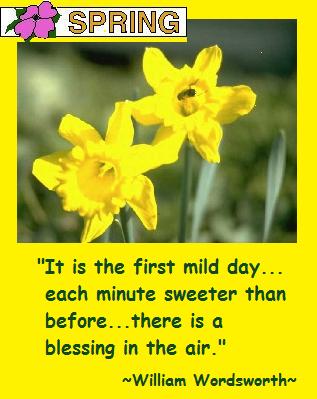
|